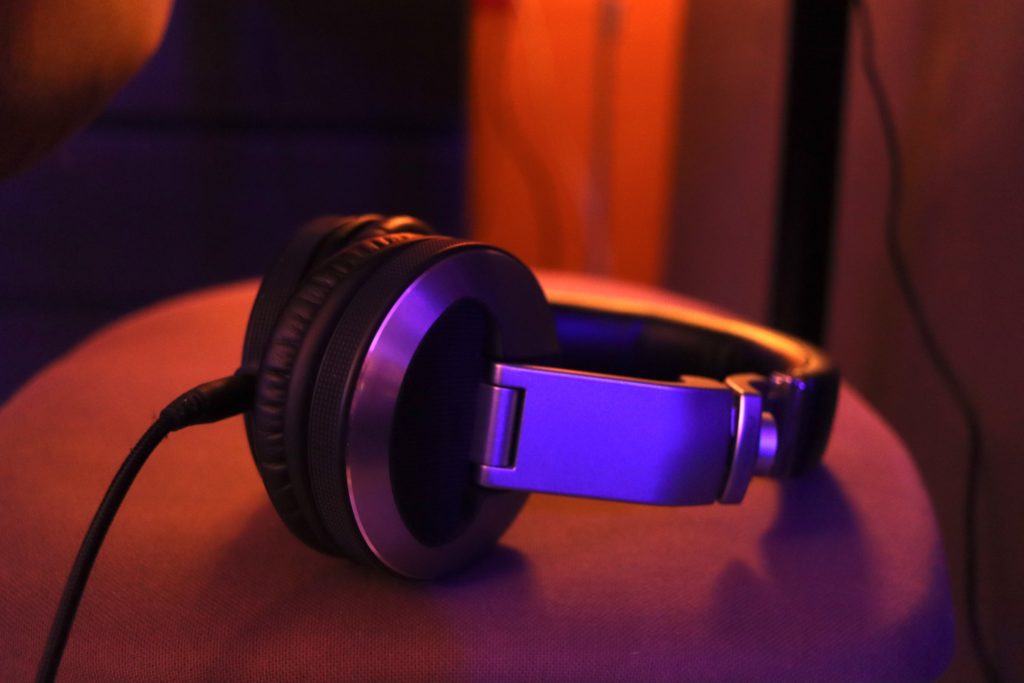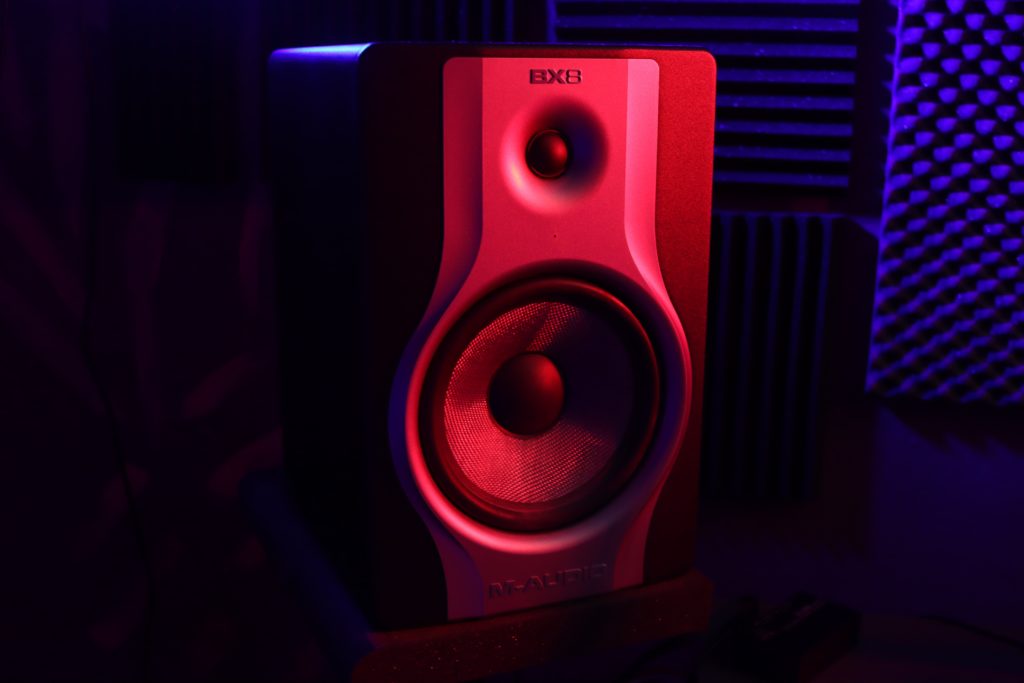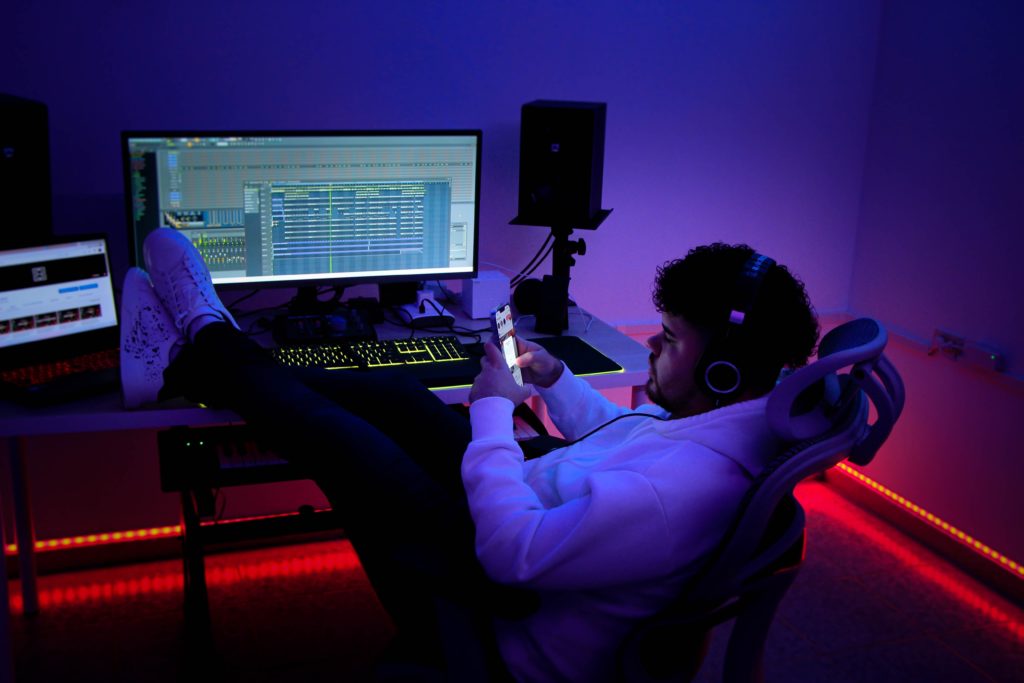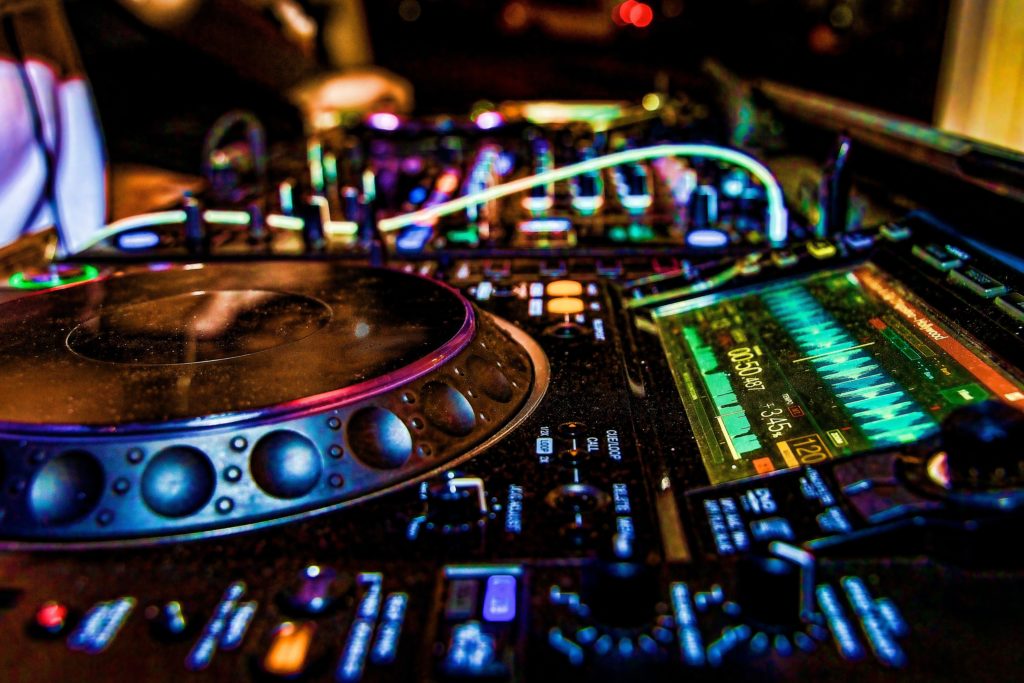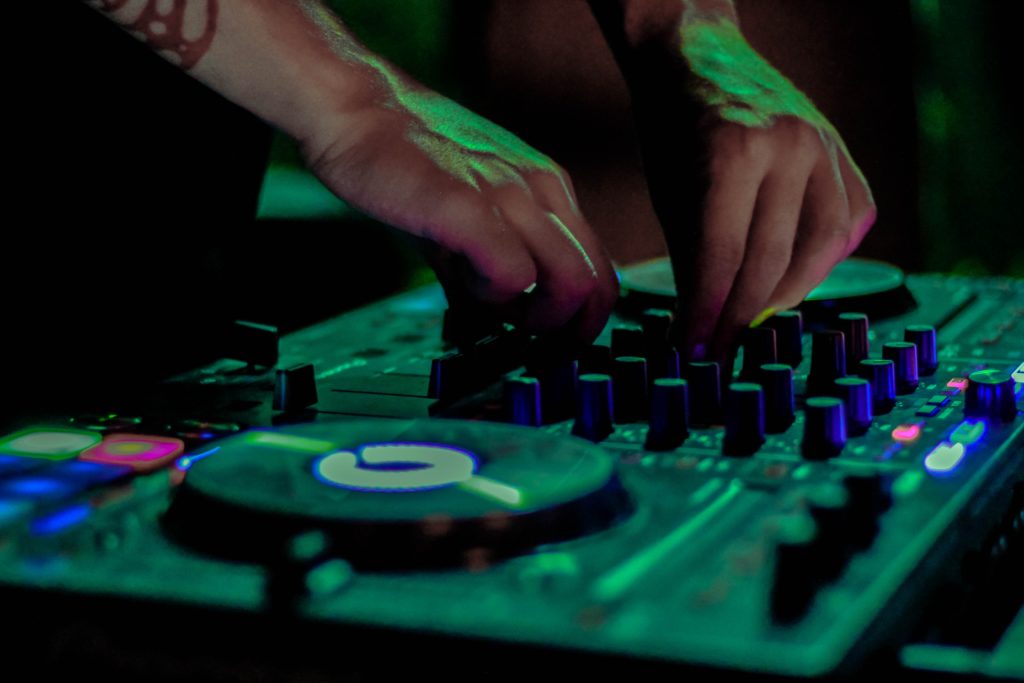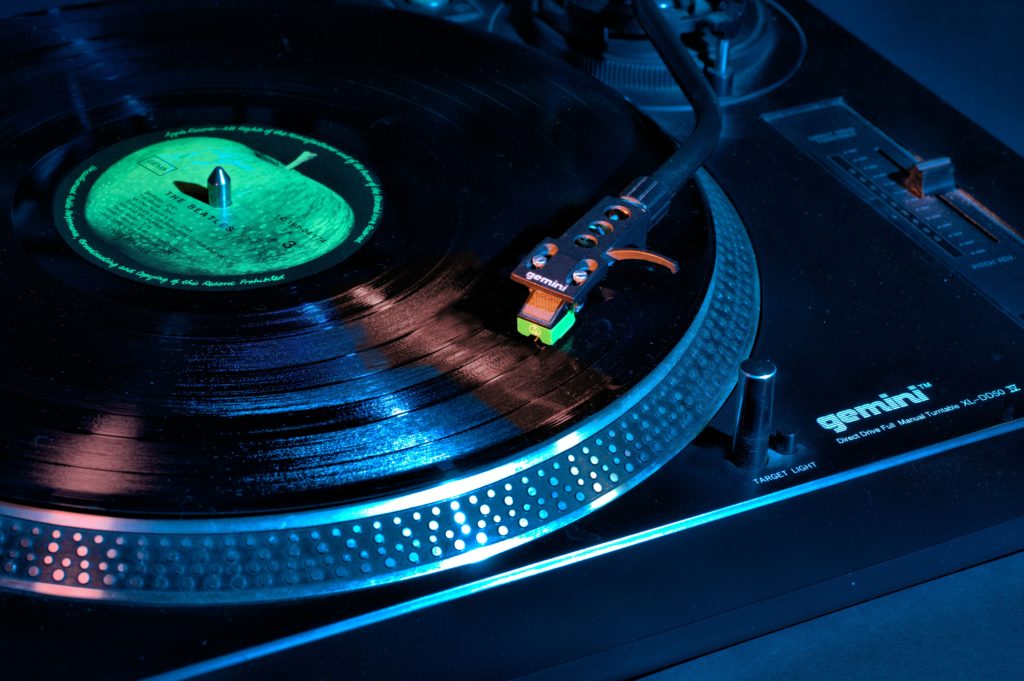While it’s nice to have a big ass fancy studio with plenty of hi-tech nik-naks in it to impress your friends, there are only a few crucial items you need to make a solid and efficient workspace for music. Going for the minimalist approach is the wisest move for a beginner in a particular, as investing lots of cash into expensive gear when you’ve got no clue how to use it is only going to lead to neglect later down the line…
Below are the studio essentials every serious music producer should have to start off with.
Work Station
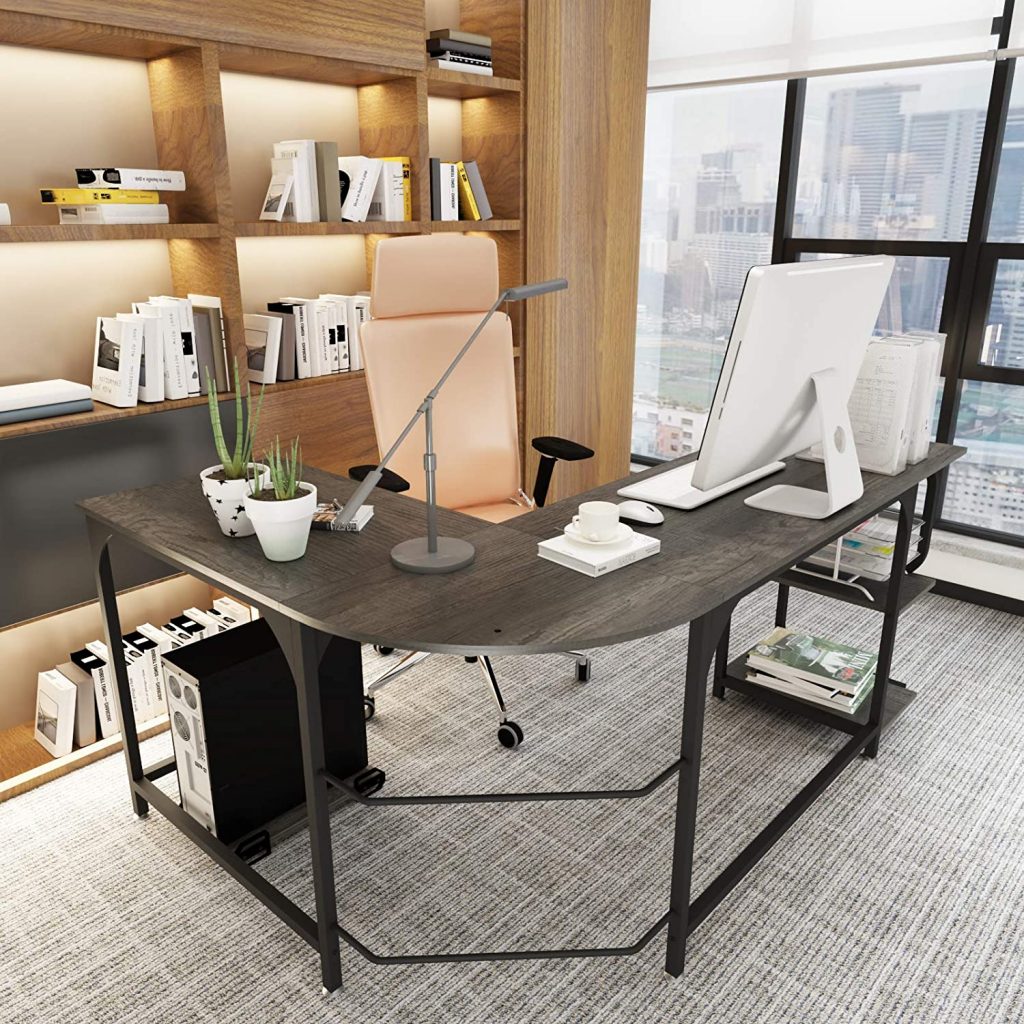
We’ll assume you’ve already got a computer or laptop and a DAW already installed, so now it’s time to give yourself a place to work where you can spend hours comfortably toying with sounds. It should be large enough to accommodate everything you need, i.e. your screen, audio interface, keyboard, etc. Some music studio desks are also designed with a surface or stands for monitors too; albeit, these all-in-one desk solutions aren’t the best because of the resonance that comes through some of the materials.
Speaker Stands
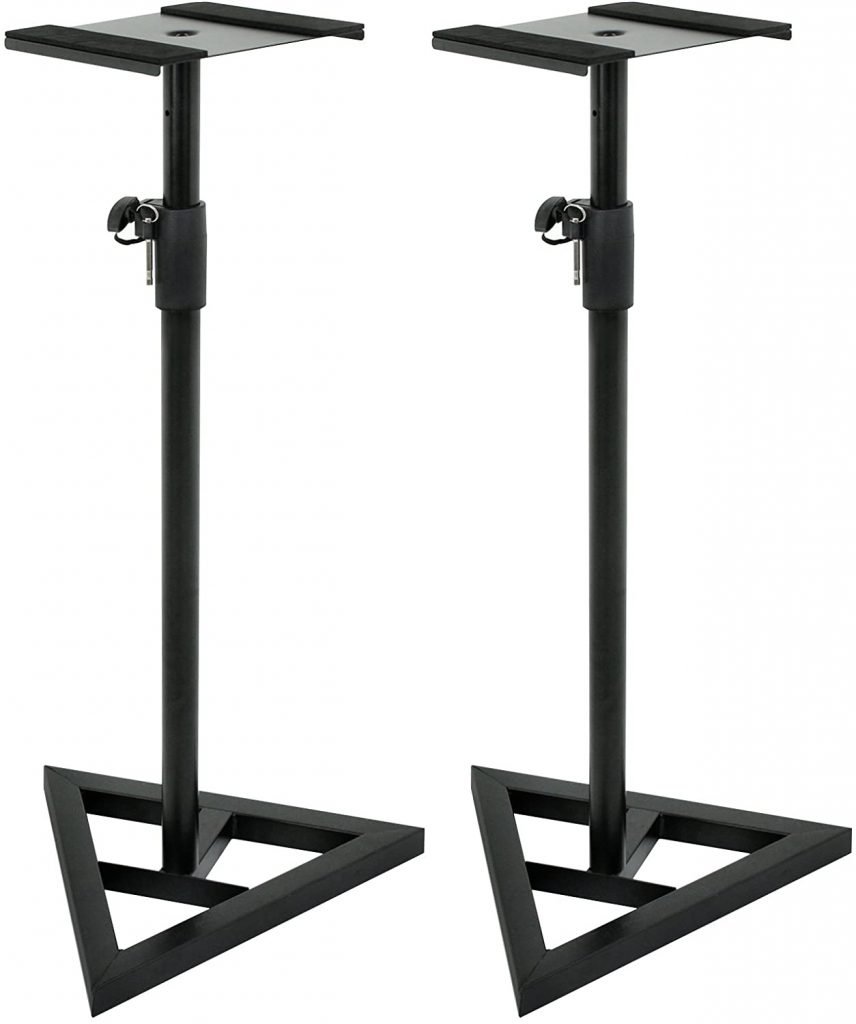
There are some great options for affordable and robust speaker stands on the market right now. Lots of them have rotational tops with built-in rubber pads which is ideal if you can’t afford to splash out on sound isolation. This also gives you a clearer and more precise sound for monitoring your levels and building your tracks. Depending on how large and heavy yours are, you can opt for large floor stands or desktop stands for smaller monitors. You’ll also find varieties with different shaped bases and height adjustment tools to help you get the best and most accurate sound.
Studio Chair
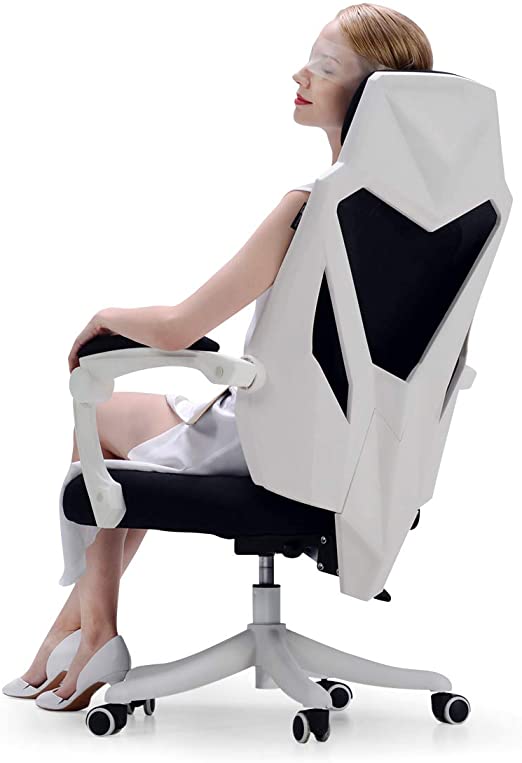
Whether you’re a producer, gamer, or someone who works from home or in an office job — there’s hardly anything more important than protecting your posture and ensuring you’re not going to be putting any long term strain on your back or neck. You can pick up plenty of strong, comfortable office chairs for a couple hundred bucks these days, and they’ll last. If you’re going to be making music with friends quite often, it’s definitely worth investing in a few if you can. If you already suffer with back problems, consider a standing desk or an ergonomic office chair with extra padding.
Bass Traps
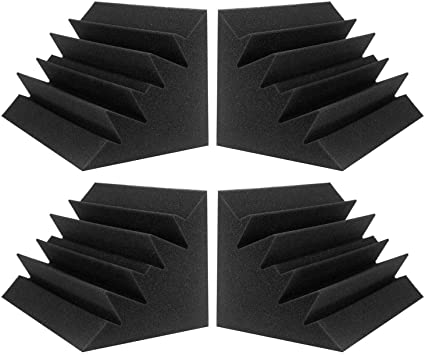
At some point, you’ll probably want to soundproof more areas of your room, but one of the most inexpensive yet fantastic ways you can reduce reflections in your studio is to get yourself some bass traps. Like traditional soundproof paneling, bass traps are made from foam which sticks into each corner of your studio to absorb the bulk of mids and low end that can seep through the ceiling and walls. While they won’t block out every frequency, they’ll definitely help control the reverb bouncing out your monitors and around the room.
Rack Mount
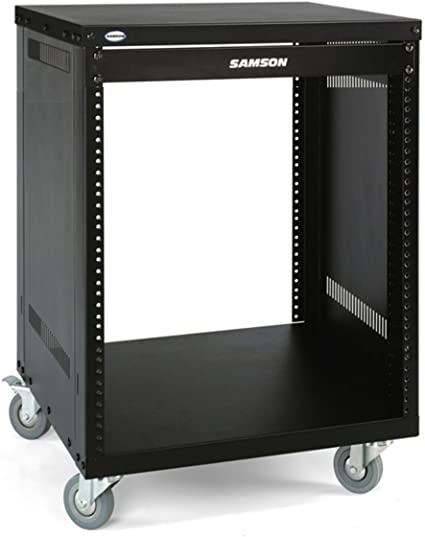
You might not have much of a need for one of these in the beginning, but as you acquire more equipment over time, a studio rack can act as a useful and convenient way to store and keep your hardware organized. You can keep things like your soundcard, power conditioner and multi-channel preamp inside it. Racks come in all different shapes and sizes, so you’ll want to look at the dimensions to ensure it fits your room before you buy. You can also purchase mobile gear racks for those who regularly take their studio on the move.
Conclusion
There are 5 affordable and essential pieces of furniture well worth incorporating into your set up. Naturally, as you become more skilled in production, you can look at upgrading to more advanced equipment such as headphone amps, DI boxes and monitor management gear.
A desk, monitor stands, rack mount, sound paneling and appropriate seating, however, are all going to make an incredible difference to the sound and way in which you conduct your music-making sessions in the meantime.


